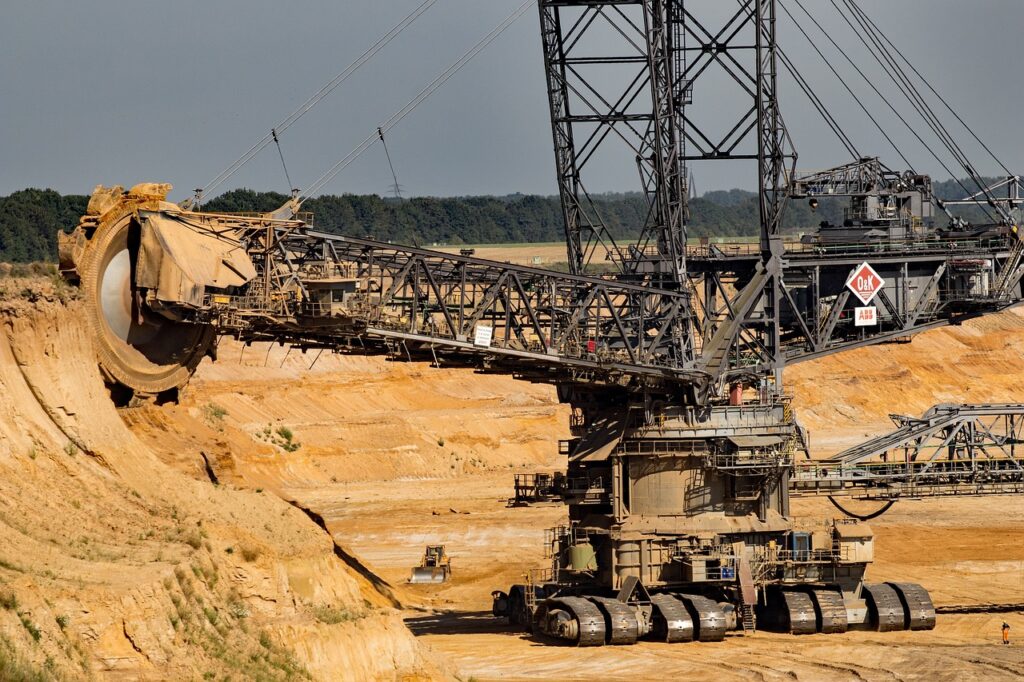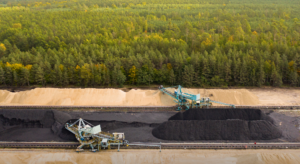The mining sector is on its journey to sustainable practices. This has given way to an increased interest in exploring alternative fuels. The ones that can reduce emissions and the impact on the environment. Moreover, amongst the various promising options, hydrogen has completely stood out. Clean, adaptable energy comes from hydrogen. We will examine hydrogen as an alternative fuel in mining in-depth and learn about its properties, advantages, drawbacks, and more in this article. So, let’s dive in.
Understanding Hydrogen: An Alternative Fuel In Mining
Hydrogen is a clean form of fuel. It therefore emits no greenhouse gases when utilised in combustion engines or fuel cells. Moreover, it can come in production from various renewable sources. As a result, it makes it a sustainable fuel option. Let’s know about it more.
Production Methods
Hydrogen has various production methods. So, when we talk about How hydrogen fuel is used as an alternative fuel, let’s look at a few of these methods along with limitations, if any:
- Electrolysis
Electricity from renewable energy sources serves in this process. It includes solar or wind power. In doing so, water molecules divide into hydrogen and oxygen. It stands to be the cleanest method for creating hydrogen. The reason for it is that it emits no direct emissions.
- Steam Methane Reforming
Natural gas comes in combination with steam and heat in this method. It produces hydrogen and carbon dioxide. Furthermore, this process is much more affordable than electrolysis. However, it generates carbon emissions. This can be mitigated through carbon capture and storage technologies.
- Gasification
In this, biomass or fossil fuel can go through conversion for synthetic gas. Furthermore, it goes into processing to extract hydrogen. It allows for the use of several feedstocks. This includes coal, petroleum coke, and municipal solid waste.
Properties and Characteristics
Hydrogen is the lightest material that can come into use. Moreover, it is available in abundance. As a result, this makes it a versatile source. Furthermore, it reflects high density when it comes to weight. So, it can store a major amount of energy relative to its mass. Its low density at room temperature and atmospheric pressure, however, makes storage and transit difficult. So, this answers the long-asked question of Does hydrogen gas has the potential to be used as an alternative fuel source.
Hydrogen Fuel Cells
Fuel cells are electrochemical devices. They produce electricity from the chemical energy of hydrogen and oxygen. Moreover, it has water vapor as its only waste. From cars to stationary power systems, hydrogen fuel cells can power a wide range of applications. This is due to their superior efficiency compared to conventional combustion engines.
Infrastructure Requirements
Establishing a strong infrastructure for the production, storage, and transport of hydrogen is necessary. So, this comprises refueling stations, storage tanks, and hydrogen manufacturing facilities. Furthermore, vehicles and equipment used in mining must be particularly built or adapted. It helps to run on combustion engines or hydrogen fuel cells. Additionally, the establishment of this infrastructure demands large financial outlays and cooperation from several parties.
Environmental Benefits of Hydrogen As An Alternative Fuel in Mining
Mining has been known to release a lot of greenhouse gases and harm the environment. So, it finds hydrogen to be an appealing alternative fuel in mining due to its numerous environmental advantages. So, let’s find out about these benefits:
Reduction in Water Pollution and Carbon Footprint
Significant volumes are frequently produced by mining operations. It includes effluent including heavy metals, chemicals, and suspended particulates. Furthermore, conventional mining activities can release this contaminated water into adjacent bodies of water. So, it can present a risk to the aquatic ecosystems. It can also be harmful to human health and the environment at large.
Water vapor is the only byproduct of using hydrogen as a fuel source, particularly in fuel cells. This vapor is safe for the environment and clean. As a result, this lowers the possibility of water contamination related to mining activities. Additionally, it eliminates the requirement for intricate wastewater treatment procedures.
Furthermore, hydrogen produces no direct emissions when it is produced from renewable sources. So, it lowers the carbon footprint of mining activities. This is consistent with industry efforts to reduce greenhouse gas emissions and meet decarbonization goals.
Improvement in Air Quality
There are no harmful contaminants made when hydrogen burns. Consequently, the quality of the air is improved. Both the ecology and the health of mining workers benefit from this. Furthermore, a safer and healthier workplace might arise from less air pollution. Additionally, it can reduce the chance of developing respiratory conditions and other health issues brought on by exposure to harmful contaminants.
Water Conservation
For several tasks, traditional mining operations frequently need a lot of water. This can include dust suppression and mineral processing. Furthermore, hydrogen fuel cells producing water vapor reduce the industry’s water usage and related environmental effects. This can be especially helpful in areas with limited water supplies. It can solve the difficulties of mining companies in locating and controlling water resources. So, these are some of the advantages of using hydrogen as a fuel.
Challenges and Limitations Of Hydrogen As Alternative Fuel
Hydrogen’s acceptance as an alternative fuel in mining is not without difficulties and restrictions. This is despite the fact that it offers the mining sector tremendous potential. Let’s look at the disadvantages of hydrogen fuel:
Cost and Economic Viability
Hydrogen production, storage, and distribution are more costly than traditional fossil fuels. Furthermore, securing cost competitiveness is essential. It helps broad adoption in the mining sector, which frequently runs on narrow profit margins. The price of hydrogen as a fuel is determined by several factors. This includes the cost of electrolysis technology, the construction of infrastructure for hydrogen, and more.
Safety Considerations
Since hydrogen is a highly combustible gas, using it in mining operations necessitates strict safety procedures. Systems for proper handling, storing, and distributing materials must be in place. This is to reduce hazards. It also guarantees the security of both the surrounding environment and the personnel. Additionally, ensuring the safe handling and utilization of hydrogen in mining operations requires extensive training programs and safety standards.
Infrastructure Development
The use of hydrogen as a substitute fuel for mining operations necessitates substantial expenditures in the construction of infrastructure. It involves production facilities, storage tanks, and refueling stations. It also includes the refurbishment or replacement of mining vehicles and equipment. So, this infrastructure development presents planning, coordination between stakeholders, and capital investment problems.
Scalability and Availability
The availability and scalability of these resources might be problematic. It can be the case, especially in distant mining regions. This is even if producing hydrogen from renewable sources is ecologically benign. For mining operations, a steady and dependable supply of hydrogen is essential. Additionally, keeping a consistent supply of hydrogen may be difficult, This is due to the intermittent nature of various renewable energy sources. It includes solar and wind.
Hydrogen Adoption: Are Collaboration and Partnerships Essential?
The research institutions, govt, and industry stakeholders should come together to forge a partnership. It helps to expedite the use of hydrogen as an alternative fuel in mining operations. Let’s learn more about partnerships for hydrogen adoption.
Public-Private Partnerships
Governments and public organizations are essential in facilitating the switch to hydrogen. This is by offering financial support, tax breaks, and legal protections. Furthermore, the establishment of hydrogen infrastructure, pilot programs, and research activities can be aided by public-private partnerships. This will promote innovation and accelerate the use of this alternative fuel in mining.
Cross-sector Collaboration
Working together with other industries that are investigating hydrogen as a fuel source can be advantageous for the mining sector. This includes energy and transportation. Furthermore, sharing expertise across industries and collaborating on research projects can spur technical development. It can also make it possible to produce, store, and distribute hydrogen at a reasonable price.
International Collaboration and Knowledge Sharing
A global problem is the switch to hydrogen as an alternative fuel in mining operations. So, international cooperation and knowledge exchange are necessary. Furthermore, it can promote the sharing of best practices. It can also support the development of regulatory frameworks and technology breakthroughs. Other forms of international cooperation include agreements for technology transfer, cooperative research projects, and more.
One example is the Hydrogen Technology Collaboration Program. It has been formed by the International Energy Agency. It gathers specialists from different nations to work together on scientific projects. Additionally, they exchange information on the production, distribution, storage, and end-use applications of hydrogen, including mining.
To Sum Up
The use of hydrogen as an alternative fuel in mining has a lot of potential to improve the sustainability of mining and lower carbon emissions. Notwithstanding the difficulties, the mining sector’s dedication to sustainability and lowering carbon emissions helps promote creative thinking and teamwork that can address such problems.
Attend the 5th Energy Transition and Emission Reduction for the Metals and Mining Industry Summit in Helsinki, Finland on June 11–12, 2024 where you will meet stakeholders, professionals as well as authoritative people in this sector. This unique gathering shall encourage thought-inspiring conversations, case studies, and networking around decarbonization strategies. It will also encompass the possibility of hydrogen serving as an alternative fuel in mining activities. So, register right away!





